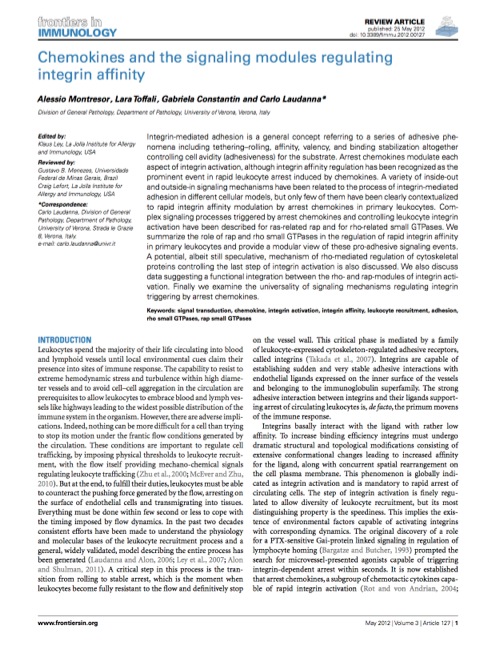These conditions, which we may call “the four criteria”, should include (see ref.):
(a) Evaluation of signaling events in primary leukocytes
(b) Evaluation of adhesion under flow conditions
(c) Measurement of rapid kinetics of adhesion triggering (seconds or less)
(d) Direct detection of heterodimer conformational changes
The rationale for adopting such criteria is based of the following considerations:
(a) Signaling studies should be always accurately contextualized, by first focusing on physiological, standard, conditions followed by comparative analysis in more specific contexts. For instance, neoplastic leukocyte cell lines are not appropriate models of physiologic leukocyte adhesion since the neoplastic transformation may alter the signaling machinery with respect to normal primary cells, thus affecting response to the agonists and data interpretation.
(b) Flow is the natural condition during cell recruitment by generating a shear stress, which imposes a mechanistic threshold to adhesion activation; thus, the efficacy of signaling events in regulating leukocyte arrest should be always challenged by applying flow conditions.
(c) Integrin activation under-flow occurs in the range of seconds or less (likely milliseconds); thus, to correlate signaling events to integrin activation relevant to leukocyte recruitment, the kinetics of the two events must be coherent. Such kinetics cannot be studied in static assays.
(d) Leukocyte recruitment is a concurrent ensemble of leukocyte behaviors, including tethering, rolling, firm adhesion, crawling, and transmigration (Ley et al., 2007). A central step is the integrin-mediated arrest, comprising a series of adhesive events, including increase of integrin affinity, valency, and binding stabilization altogether controlling cell avidity. Thus, integrin-mediated adhesion is just a generic concept. To precisely assess whether a signaling event specifically regulates integrin conformational changes leading to affinity increase it is necessary to be able to directly detect integrin structural rearrangements by means of soluble ligand-binding assays or reporter monoclonal antibodies detecting activation epitopes.
These four criteria should be always satisfied in order to correlate signaling events to affinity triggering controlling leukocyte rapid arrest in physiological contexts.
See the original paper below.
